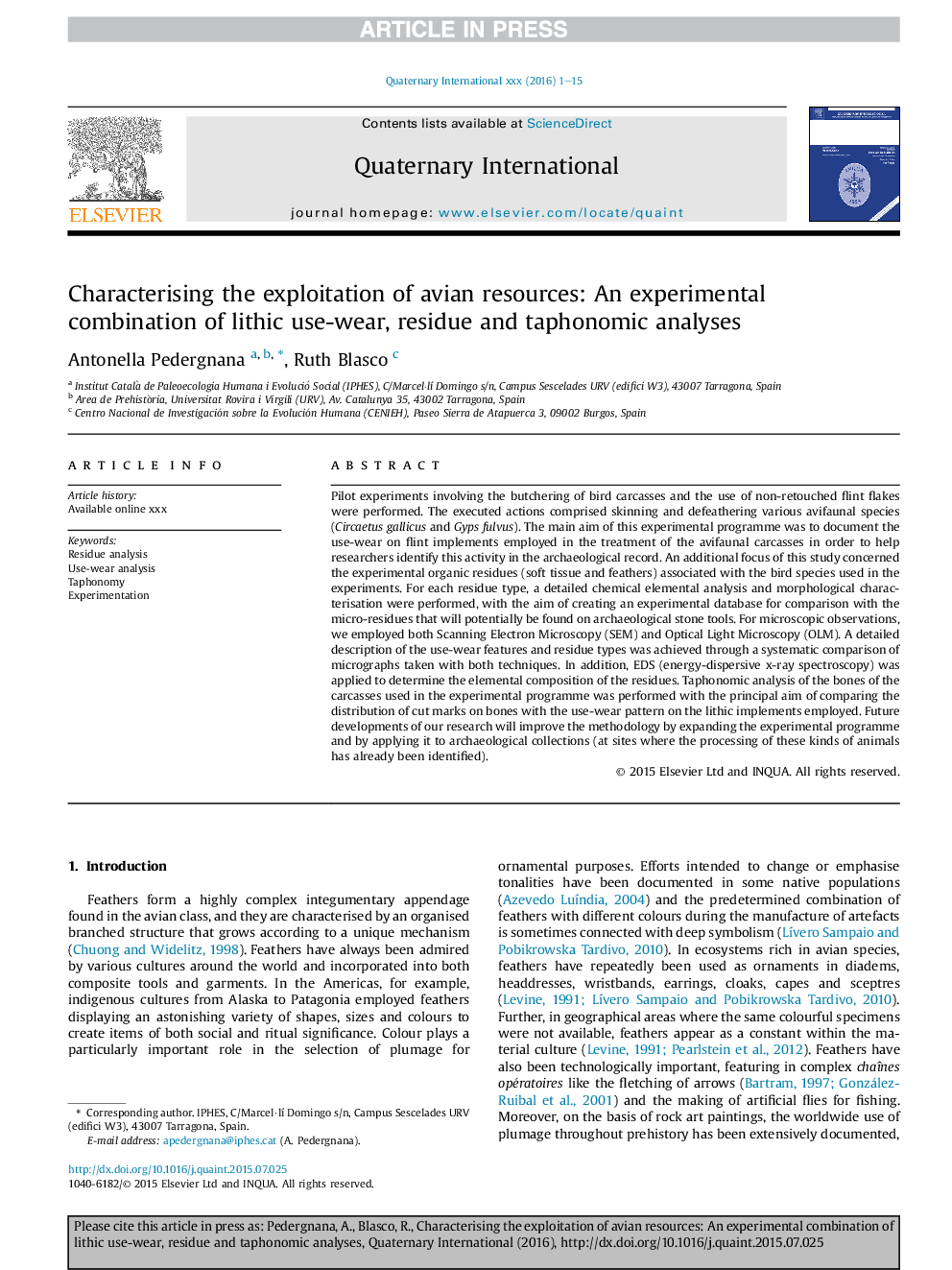| Article ID | Journal | Published Year | Pages | File Type |
|---|---|---|---|---|
| 5114198 | Quaternary International | 2016 | 15 Pages |
Abstract
Pilot experiments involving the butchering of bird carcasses and the use of non-retouched flint flakes were performed. The executed actions comprised skinning and defeathering various avifaunal species (Circaetus gallicus and Gyps fulvus). The main aim of this experimental programme was to document the use-wear on flint implements employed in the treatment of the avifaunal carcasses in order to help researchers identify this activity in the archaeological record. An additional focus of this study concerned the experimental organic residues (soft tissue and feathers) associated with the bird species used in the experiments. For each residue type, a detailed chemical elemental analysis and morphological characterisation were performed, with the aim of creating an experimental database for comparison with the micro-residues that will potentially be found on archaeological stone tools. For microscopic observations, we employed both Scanning Electron Microscopy (SEM) and Optical Light Microscopy (OLM). A detailed description of the use-wear features and residue types was achieved through a systematic comparison of micrographs taken with both techniques. In addition, EDS (energy-dispersive x-ray spectroscopy) was applied to determine the elemental composition of the residues. Taphonomic analysis of the bones of the carcasses used in the experimental programme was performed with the principal aim of comparing the distribution of cut marks on bones with the use-wear pattern on the lithic implements employed. Future developments of our research will improve the methodology by expanding the experimental programme and by applying it to archaeological collections (at sites where the processing of these kinds of animals has already been identified).
Related Topics
Physical Sciences and Engineering
Earth and Planetary Sciences
Geology
Authors
Antonella Pedergnana, Ruth Blasco,
